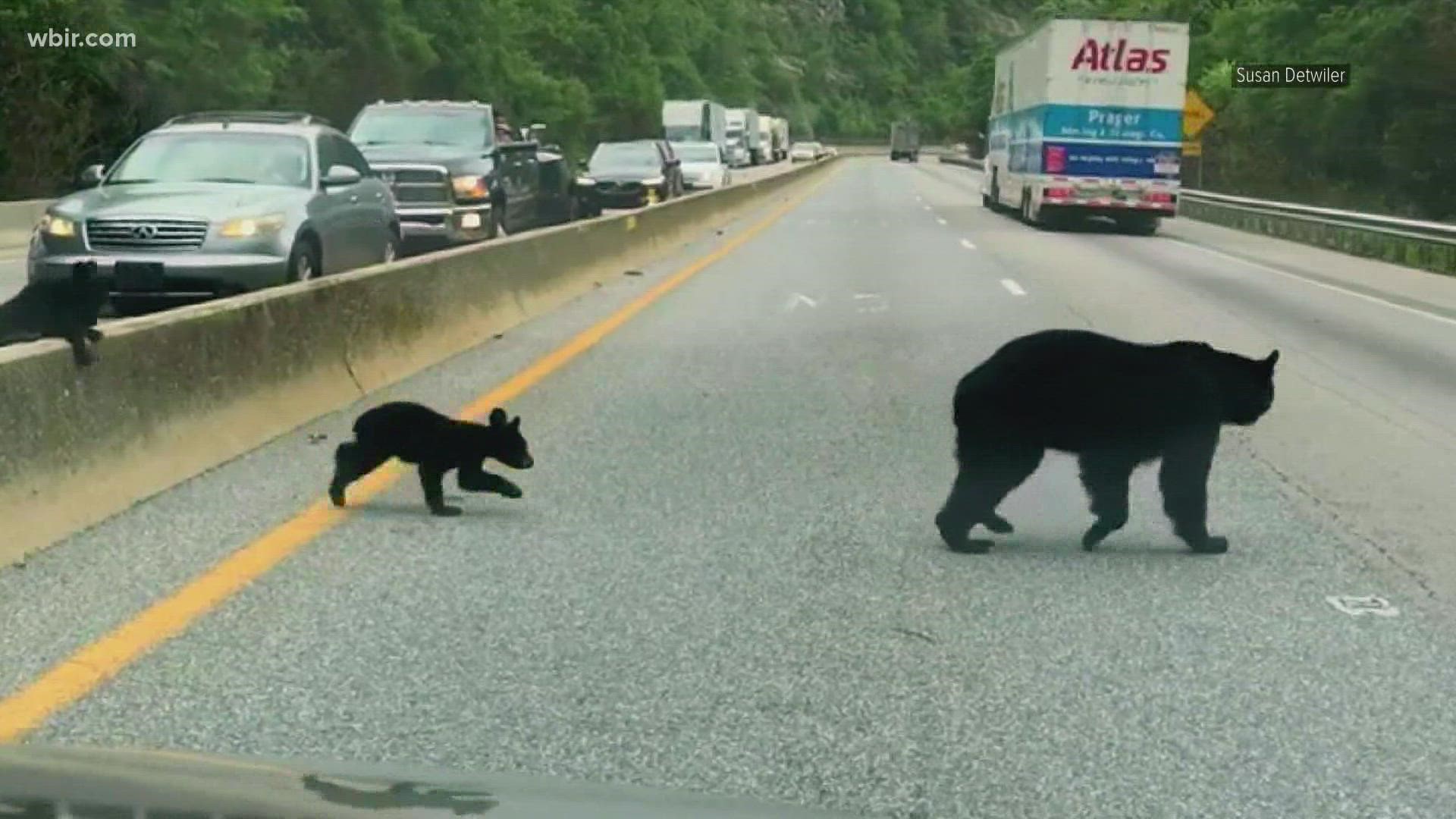KNOXVILLE, Tenn. — More than 26,000 people drive down I-40 through the Pigeon River Gorge every day. That average will increase as the holiday travel season approaches.
This season, there may be a severe traffic backup crossing the state line from Tennessee to North Carolina.That's because NCDOT is replacing a bridge that was built in 1968. According to NCDOT, the project needed to be done.
"It's the first of five bridges we're replacing," said Wanda Austin, an engineer with The North Carolina Department of Transportation.
However, replacing the bridge in Harmon Den for human- safety purposes is only part of the benefit. The other benefit is to wildlife.
The concept is part of a partnership between NCDOT and Safe Passage, the I-40 Pigeon River Gorge Wildlife Crossing Project. The goal is to create safe pathways for animals to get from one side of the interstate to the other.
"We're trying to remediate not only a transportation issue, but also a wildlife mortality issue that we have on the corridor," Austin said.
Jeff Hunter with Safe Passage and the National Parks Conservation Association says the collaborative project is much needed in the area.
"This gorge is absolutely rich with lots of other species that people don't know about like long-tailed weasels, and spotted skunks, and river otter, and American mink, and on and on," Hunter said, "But, of course, we have the bears, deer and elk that everyone loves too."
According to Hunter, the black bear population has grown over the past 4-and-a-half years.
"The fact that we see so many bears along the highway is an indication the population is doing well," Hunter said.
Many bears take the risk to try and cross the interstate. However, not all of them make it. In the last 3 months, nine bears died in the 28-mile stretch of I-40 through Pigeon River Gorge. In the last 4 years, 92 bears died.
Those numbers are collected by collision reports, the maintenance staff at the states' transportation departments, weekly driving surveys conducted by the National Parks Conservation Association and Wildlands Network.
Hunter said the number of bears is undoubtedly more than what is reported.
"It definitely does not represent the whole picture," Hunter said. "Males are out looking for mates, they're moving across the landscape. They also look for acorns. They have to take that risk in order to fulfill that need. They have to eat. And if it's not here, they're going to look there."
The bridge is the first of five that are being built by NCDOT.
"This is just the beginning of the collaboration. This is definitely not going to be the end of this," Austin said.

